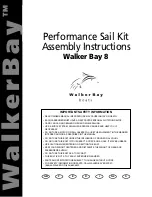
7 Installation
24 / 36
EN-US · 30.30.00.00422 · 08 · 09/22
For the start of operations, the ejector must be connected to the controller via the connection plug with a
connection cable. The compressed air required to generate the vacuum is connected via the compressed
air connection. The compressed air supply must be supplied by the higher-level machine.
The vacuum circuit is connected to the vacuum connection.
The installation process is described and explained in detail below.
7.3 Pneumatic Connection
CAUTION
Compressed air or vacuum in direct contact with the eye
Severe eye injury
4
Wear eye protection
4
Do not look into compressed air openings
4
Do not look into the silencer air stream
4
Do not look into vacuum openings, e.g. suction cups
CAUTION
Noise pollution due to incorrect installation of the pressure and vacuum connec-
tions
Hearing damage
4
Correct installation.
4
Wear ear protectors.
7.3.1 Connecting the Compressed Air and Vacuum
The compressed air connection is marked with the number 1 on the ejector.
4
Connect the compressed air hose. The max. tightening torque is 4 Nm.
The vacuum connection is marked with the number 2 on the ejector.
4
Connect the vacuum hose. The max. tightening torque is 4 Nm.
7.3.2 Instructions for the Pneumatic Connection
Use only screw unions with cylindrical G-threads for the compressed air and vacuum connection!
To ensure problem-free operation and a long service life of the ejector, only use adequately maintained
compressed air and consider the following requirements:
•
Use of air or neutral gas in accordance with EN 983, filtered 20 μm, oiled or
unoiled.
•
Dirt particles or foreign bodies in the ejector connections, hoses or pipelines
can lead to partial or complete ejector malfunction.
1. Shorten the hoses and pipelines as much as possible.
2. Keep hose lines free of bends and crimps.













































